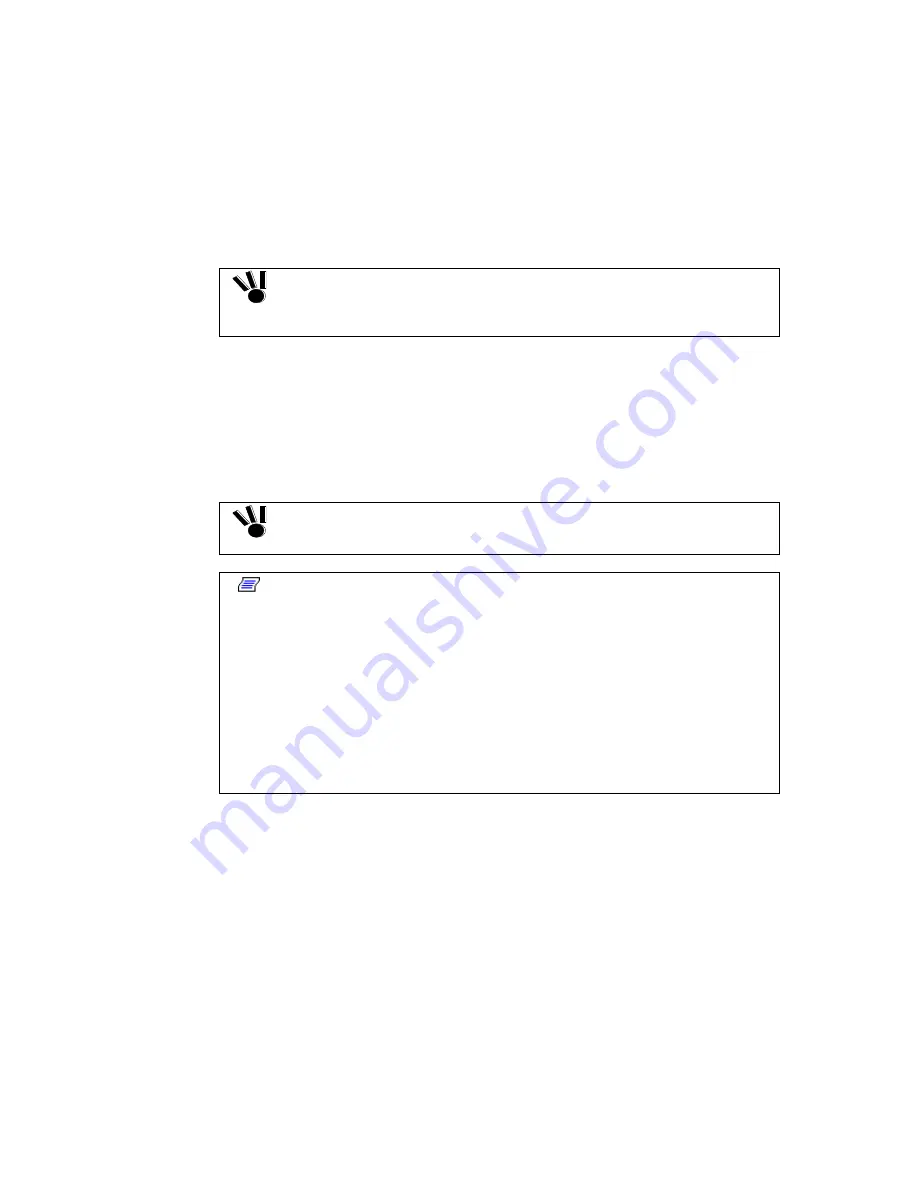
- 39 -
7.3 LD (Logical Disk) Setting Procedure
To use the additional disk enclosure, first install the disk drive and then set the RAID level
of the installed disk drive, and assign the logical disk (LD) configuration. When the disk
drives are added, the RAID level and logical disk (LD) must be set appropriately.
Set the RAID level by using the "NEC Storage Manager", or contact the service engineer
with expert knowledge in your service representative for setting of the RAID level.
If the disk array unit is connected with NF9520-SH01E, changing the LD
(logical disk) configuration may cause the OS to fail to recognize the logical
disks.
Be sure to restart the host system after changing the LD configuration.
7.4 Spare Disk Setting Procedure
Spare disk can be set only in RAID level 1, 5, or 10.
Set the spare disk by using the "NEC Storage Manager", or contact the service engineer
with expert knowledge in your service representative for setting of the spare disk.
For spare disk, make sure to assign the disk drive in slot 14.
If slot 14 already contains a disk drive for a spare disk, install the additional
disk drive in slot 13.
When you change a failing disk to a spare disk, confirm the following to get
the spare disk to function normally:
The capacity of the spare disk is equal to or greater than that of the failing
disk.
The rotational speed of the spare disk is equal to or faster than that of the
failing disk.
Therefore, if a large-capacity disk is defined as a spare disk, it can cover all
the disks of a high-speed drive. However, if your disk array unit contains disks
of different capacities or different rotational speeds, you should define a spare
disk matching the capacity and rotational speed of each disk in order to clarify
disk management.
Up to 2 spare disks can be installed for each disk enclosure. Up to 16 spare
disks can be installed for the entire disk array unit.
Summary of Contents for NF2300-SE41E
Page 7: ... v ...
Page 38: ... 24 Sample configuration 2 NF2300 SR4xxE NF2300 SP02E ...
















































